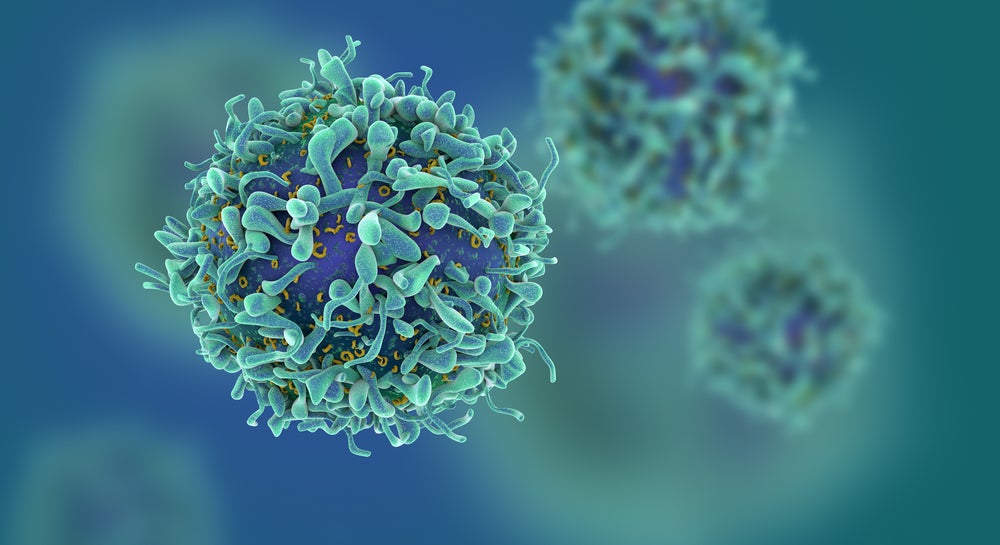
US-Canadian Fusion Pharmaceuticals is collaborating with Anglo-Swedish pharma giant AstraZeneca to develop next-generation radiopharmaceuticals, known as targeted alpha therapies (TATs), to treat cancer.
For this partnership, “Fusion will bring the radioisotope and linker technology, as well as expertise in radiopharmaceutical development, manufacturing and supply chain,” explains the company’s CEO John Valliant. Fusion’s Fast-Clear linker technology allows for isotopes to be delivered to tumour cells and also be rapidly cleared from the body.
Valliant adds: “AstraZeneca will bring…their industry-leading antibody portfolio and oncology expertise.”
AstraZeneca Oncology research and development senior vice-president and head of research and early development Susan Galbraith noted in a release: “With this collaboration, we will seek to identify synergies between our pipelines to unlock the full potential of our medicines, and also to develop novel targeted radiopharmaceuticals.
“We believe that the Fusion team’s expertise in next-generation radiopharmaceuticals complements AstraZeneca’s extensive research and development portfolio.”
According to the terms of the agreement, Fusion and AstraZeneca will jointly discover, develop and have the option to co-commercialise the novel TATs in the US. Fusion will receive an upfront payment from AstraZeneca and will also be eligible for future development milestone and other payments.

US Tariffs are shifting - will you react or anticipate?
Don’t let policy changes catch you off guard. Stay proactive with real-time data and expert analysis.
By GlobalDataAlthough clinical costs will be shared, Fusion will be responsible for pre-clinical development, while AstraZeneca will take over for the clinical stages of development.
Spotlight on Fusion’s radiopharmaceuticals
Radiotherapy has been the standard of care for many cancers for decades. However, Fusion aims to take this principle and make it more targeted with radiopharmaceuticals that precisely deliver radiation to cancer cells, explains Vaillant.
Focused on alpha-emitting radiopharmaceuticals, Fusion used its proprietary Fast-Clear Linker technology to combine alpha radiation with targeting molecules, such as antibodies. These TATs “cause substantial physical damage to cancer cells, including multiple double-stranded DNA breaks that are lethal to the tumour”, Valliant notes.
TATs also have multiple mechanisms of action that “may give them the ability to treat hard-to-treat solid tumours”. Further to this, they also cause “the release of tumour-associated antigens and concomitant maturation of antigen-presenting cells and proliferated T cells at tumour sites, leading to an enhanced immune response to go along with the physical damage by the alpha radiation”, adds Valliant.
Combination therapies
Valliant explains that another element of the multi-pronged mechanism of action of the company’s TATs is that they have “the potential to work synergistically with other approved oncology therapies”.
He continues that preclinical studies have suggested that combining TATs with checkpoint inhibitors might cause a “robust therapeutic effect in solid tumours compared to checkpoint inhibitor monotherapies”. There is also promise of combining TATs with DNA damage response inhibitors.
Given these promising potential combinations, in addition to developing novel TATs by linking AstraZeneca antibodies with alpha-emitting isotope Actinium225, Fusion and AstraZeneca are also working on combining the former’s lead TAT candidate FPI-1434 with other oncology therapeutics in the latter’s portfolio.
Valliant notes: “Together we will explore new combination therapies, including evaluating the synergy of the DNA-damaging and neoantigen-creating power of TATs with DNA damage repair inhibitors and immuno-oncology agents to create new and potent cancer therapies and treatment paradigms.”


